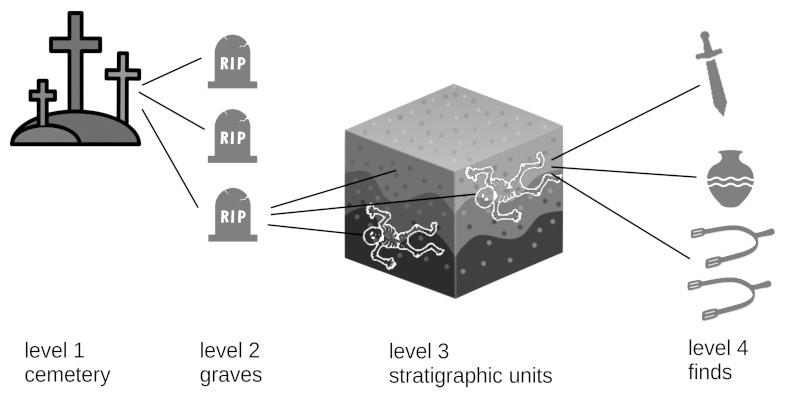Place
CIDOC documentation: E18 Physical Thing and E53 Place
A place can be e.g. a continent, a city, or a graveyard. For step by step instructions have a look at our Places.
At the index page already entered entities are listed in a Table.
Click on the + button to enter a new one
Click on the name of an entry in the list to access the detail view
To edit or delete an entry, click on the Edit button in the detail view.
Form fields
Administrative Unit
Historical Place
You can edit administrative units and historical places under Types in the Places tab.
Administrative Unit
Hierarchy of administrative units in which the place is located, e.g. Austria, Italy and their respective subunits like Lower Austria or Styria.
Historical Place
Hierarchy of historical places respectively historical administrative units in which the place is located e.g. Duchy of Bavaria or Lombard Kingdom.
Can be linked via tabs to
Source - if a source refers to a place
Event - you can link a place to a newly created event. It’s not possible to link to existing events in this way; you can link a place to an existing event via the event’s form though
Actor - you can link a place to a newly created actor. It’s not possible to link to existing actors in this way; you can link a place to an existing actor via the actor’s form though
Feature - as subunit of a place (for more information see below)
Places and their subunits
In OpenAtlas a place is a “physical thing” (CIDOC CRM E18Physical Thing) that has a certain position and/or extends in space. It can be connected to various other information (temporal, spatial, events, sources, etc.). Furthermore, places can be divided into multiple subunits to record archaeological information. For more information on subunits see Feature, Stratigraphic unit, Artifact, and Human remains as well as a detailed workflow example (Archaeological data).
An example of a place would be a graveyard. The place is the superior unit. Each grave of this cemetery is considered a Feature that forms the cemetery. Each of those graves is composed of one or many subunits (Stratigraphic unit)such as burials in the very grave (e.g. a primary and a secondary burial) and its back filling. Each stratigraphic unit may have associated Artifact, e.g. the grave goods of one of the burials or artifacts found in the back filling. Anthropological information can be added via Human remains - another subunit of stratigraphic unit.

Adding multiple places
It is not possible to link more than one place (or their subunits) to one artifact. This problem can be solved by using Move events. Please go to Artifacts for more information.